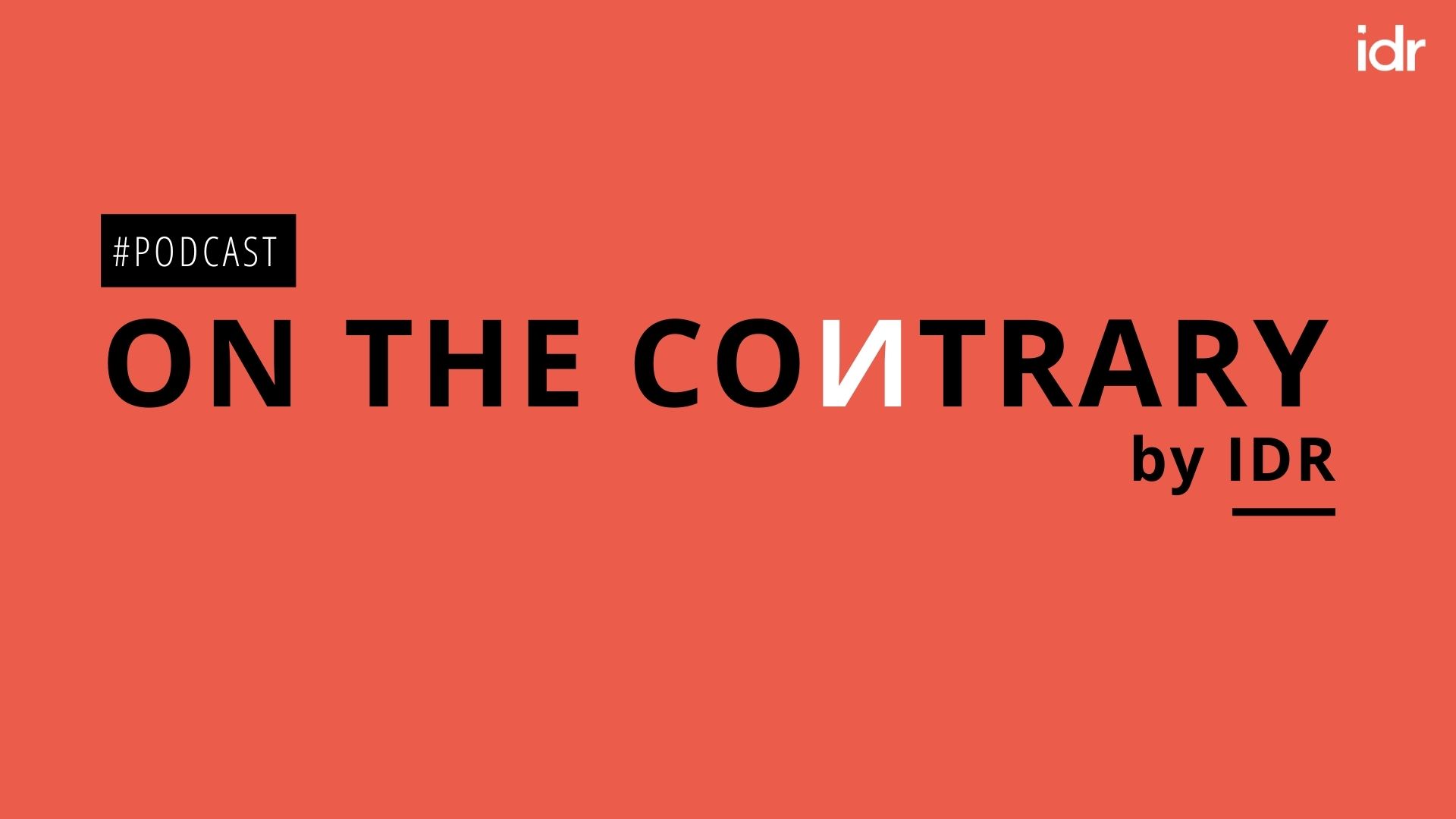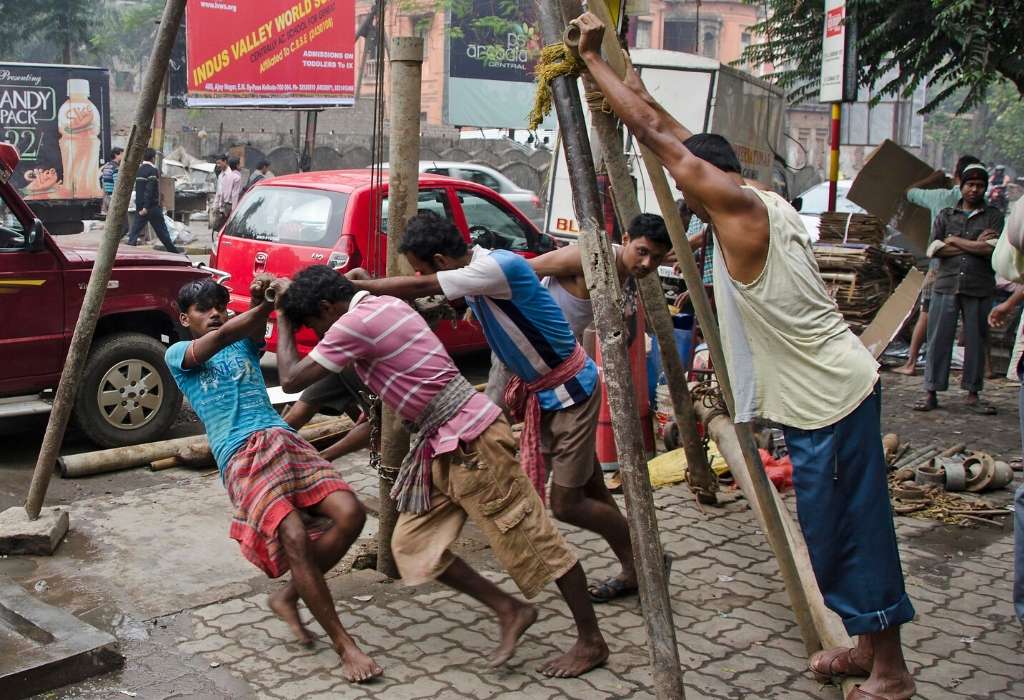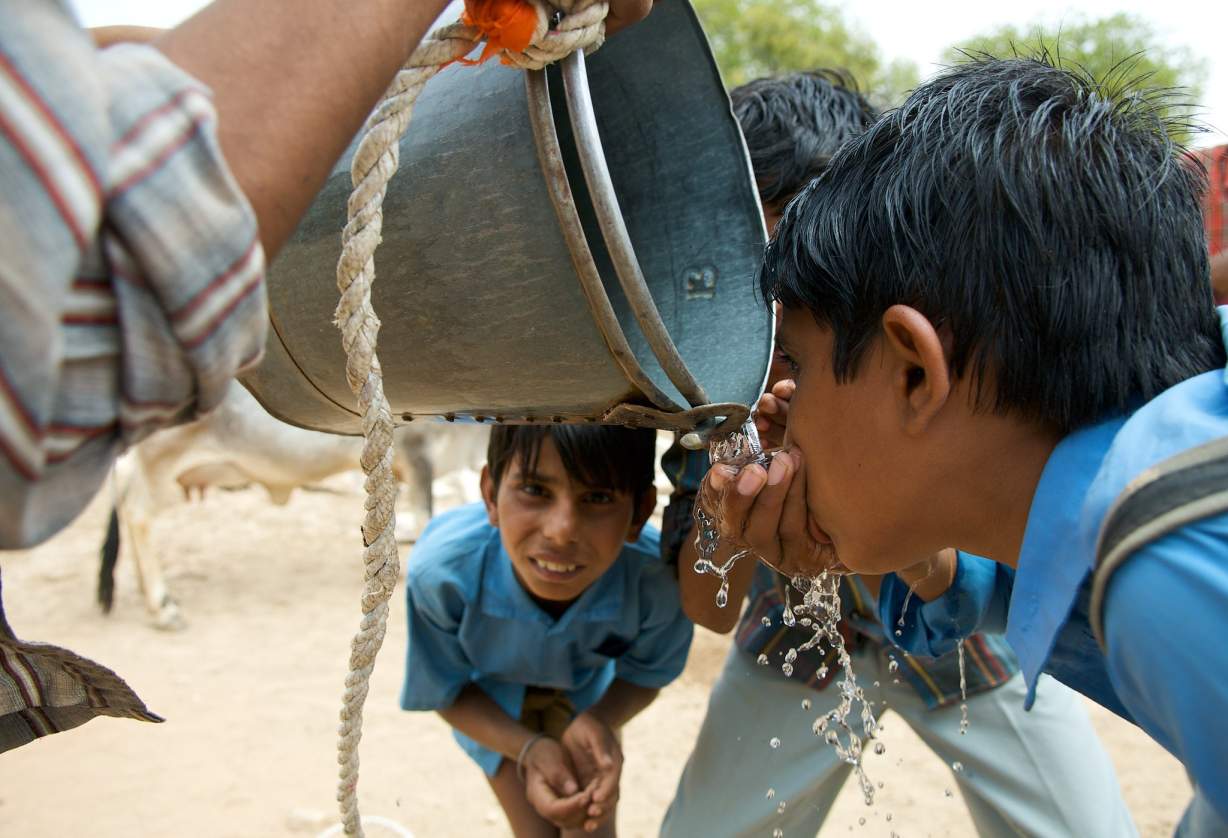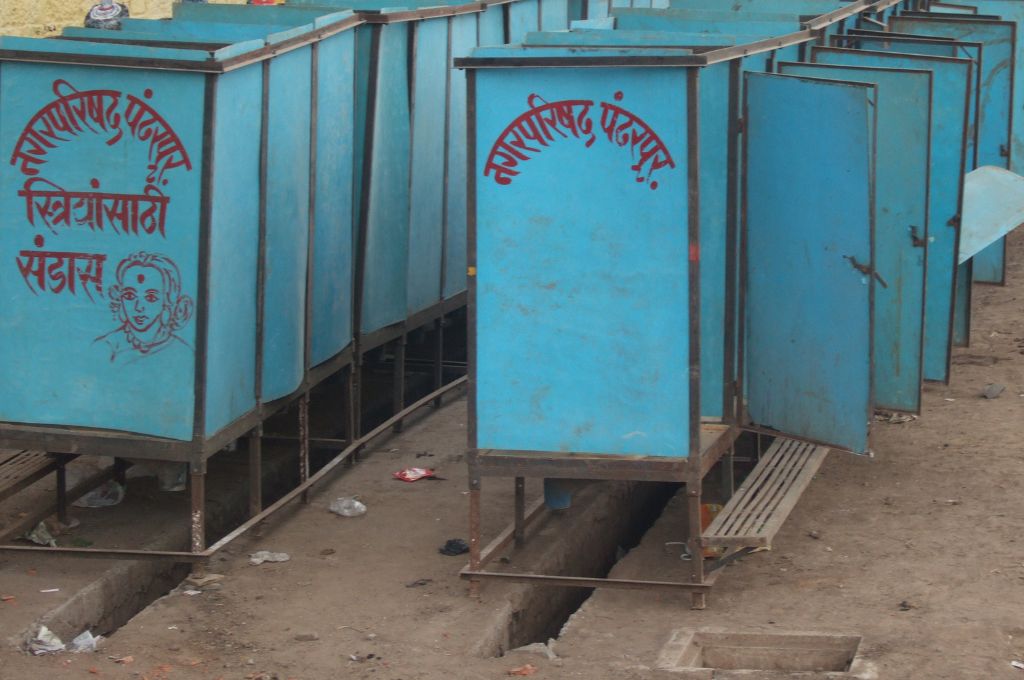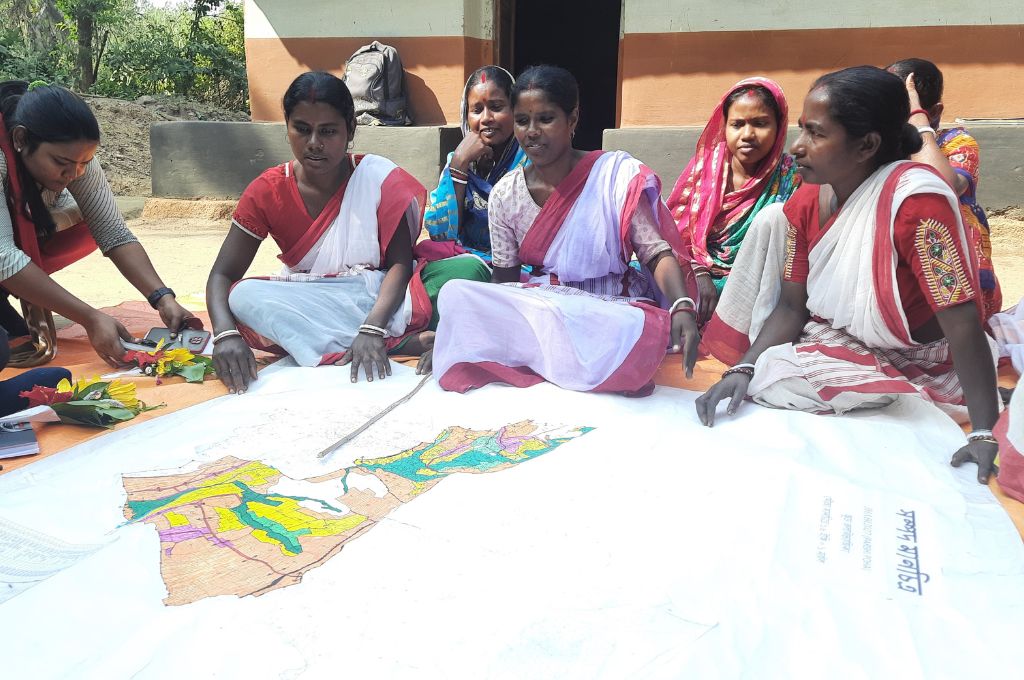Edited transcript of the episode:
00.41
Sneha: According to a 2019 NITI Aayog report, India is suffering from the worst water crisis in its history. And the World Bank’s Water Resources Group predicts that if India continues to consume water at the current rate, then by 2030 we will be left with only half the quantity that we need to survive.
So, it’s safe to say that we’re in the midst of a water crisis. But there is hope.
While water security is a complex challenge, solutions are emerging from many different quarters—the government, industries, universities, and the people and communities that are most vulnerable to water scarcity.
Joining me today on this episode of ‘On the Contrary by IDR’ are Ajith Radhakrishnan and Jagdeesh Rao Puppala. They’re going to lay out the complexities of India’s waterscape, the roles that different actors play, and what the solutions can look like—be it drawing on traditional wisdom or on emerging innovations and technology.
Ajith is a senior specialist at the World Bank’s New Delhi office and coordinates the country programme for the 2030 Water Resources Group in India. He has a wide-ranging knowledge of issues relating to sustainable development—from agriculture and water resources management to climate adaptation and partnership building in complex political economies. Jagdeesh was part of the founding team of Foundation for Ecological Security (FES) and was its CEO for almost two decades. He has worked extensively at the intersection of poverty and environmental degradation and also on systems thinking that factors in ecology, society, and economy.
02.33
Sneha: My first question is for both of you. From each of your experiences and from each of your perspectives, we’d like to understand how you would describe the current scenario of water security in India. Ajith, if we could start with you.
Ajith: Thanks, Sneha. I think, to begin with, it’s a great context to build in, especially since we are looking at the UN Water Conference happening in another couple of days. Also, the world is increasingly recognising the importance of water as a connector between climate change, food security, energy security, and all those different development challenges that we are facing. So in that context, India—if it’s on the trajectory to becoming an economic powerhouse—then we need to also think about routes and trajectories that can actually create a safer, greener growth story for India.
Now, we are not looking at a doomsday scenario. Of course, we do have challenges in terms of management, and the overall problem of management of water in the country. There is also a problem of lack of science and data-backed decisions that happen when it comes to management. But there is also promise in the way that different stakeholders are looking at water. Increasingly, water is seen as an economic resource, which it has always been. But I think the recognition of water as an economic resource is coming to the top. It is also seen as something that is very critical for [India’s] development story. If India needs to prosper, if India needs to grow, then obviously it needs to conserve its water resources better. So that realisation is there among different stakeholders. But when it comes to the implementation of different schemes and programmes, I think we would need to do a bit better by bringing together different stakeholders, by working together better, and finding the means to create a better story out of this.
So if we are looking at the prospects of poor management here in India, in the sense that there are challenges that we face on a daily basis in terms of water management at [the] city level, at the village level, and [in] the farms in India—we do have challenges. But I think there is an opportunity out there that can create stakeholder coalitions where we can work together to solve some of these issues. So I’m optimistic about it. At the same time, I acknowledge the challenges.
05.00
Sneha: Thanks, Ajith. Jagdeesh, coming to you, what’s your take on this? How would you describe water security in India at the moment?
Jagdeesh: I would like to open up the conversation a little more about what the security of water [means]. Is it just a supply and demand issue that we manage better? Or would we like to say that water security is about life and various living forms that live in water and connect water to the livelihoods of several million people across the globe?
So in terms of that understanding, that water [security] is not a supply and demand [issue relating to] just the quantity of water, but the quality [of water] and it being a medium for various forms of life, [my assessment is] that we are living in a very precarious situation. I think there is a need for high-level innovations on the institutional apparatus, which is required for addressing this problem at scale, and at a pace where we can address this issue meaningfully in the next 10–15 years or so. So the institutional apparatus has to be backed by solid mechanisms, say, the panchayat or a much larger unit, maybe a block or a landscape. That kind of an institutional mechanism is required. The institutional mechanism also doesn’t necessarily reduce it to only village people. Institutions are what happen between governments, academia, the local corporations or markets that are present in the area. What is the kind of governance arrangements between these various actors? And [what are] the rules of the game between these actors?
Water is a somewhat adjacent layer next to land and forests.
The second element of this water security that I am not somewhat comfortable with—we again get reductionist, we talk only about water. Water is a somewhat adjacent layer next to land and forests. Unless we see the continuum of forest, land, and water and thereby the production systems like agriculture, livestock, or even industrial use, I think we will be missing the point. Water security has to be seen from the continuum of these various other resource systems where the forests help as sinks for sources at a later point for the human civilisation.
The last part on water security is also our understanding of the legal recognition of water. There have been propositions for making it a legal right—drinking water as a right. I think it’s gaining traction, more and more. And there have been several other countries where water is seen as a legal personhood itself. That’s my take on this.
07.51
Sneha: Jagdeesh, you mentioned that we’re in a precarious position when we think about water security in the country. Given all of the work that you’ve done at FES, could you tell us a little bit about how different kinds of communities that are very directly facing this precarious situation are responding. What do some of the innovations—perhaps at the community level, at the ground level—look like?
Jagdeesh: Yeah, and I will broaden [the conversation] because all of us are affected. It’s not just the local village communities per se. So communities are communities, and communities of, say, industry or the legal fraternity, public policy people—all of us are concerned about it. And that’s precisely what is needed—we need all hands on deck to address this problem. Let me layer it into some three, four categories of communities. It is bad; it is bad compared to, say, some five, six decades ago. Whatever in the [name] of development we have done [has] virtually eroded some centuries of local wisdom [of how] to live with frugal availability of water. Many parts of India are chronically dry, rainfed areas. And places like Kachchh, Rajasthan—semi-arid tracts of peninsular India—always knew how to [deal] with [these] vulnerabilities. They had arrangements of pooling resources, mobility, storage, making pickles, which [would] tide them over certain crises. These are institutional innovations that have happened over centuries. And people have developed certain kinds of lifestyles, like pastoralists who move from one village to the other, depending upon the water and pasture availability. So, those have been, say, eroded and new forms of innovations have come in, some good, some may[be] not so good. We always think about water and availability from a human point of view, saying that we can distribute water to humans for drinking purposes. But we have an equal size of livestock population in the country. Now, how are you going to fix the drinking water problems of livestock, if you are going through these pipelines? Why don’t we use [water] wherever [it] is? Store the water there with local imagination? That kind of thinking is necessary. It is there getting eroded, but a fillip from the policy investment side might actually [boost] a lot of other innovations. For example, [response by] local communities [around millets] is getting wonderful recognition in the last year. Millets have, in a very natural way, [assisted] village people [in] accommodating [and] adjusting to low water availability. Now suddenly—and [it is] good that it has got some policy attention and investments attention—we have millets being talked about sizeably. A similar case is with natural farming; now natural farming is also getting attention internationally.
So these are wonderful initiatives that one needs to talk about. If we talk of other communities [working] within the [local] communities, that are also these enabler kind of communities, I was so pleasantly relieved to see one of the partner nonprofits, WOTR, talk about water scoreboards. That is a kind of powerful tool for the local communities, for the local industry there to look at what is available in that particular location and change their behaviour accordingly. Similarly, I also hear of examples in Meghalaya, where the government of Meghalaya, the local chiefs, the local communities that are there are looking at pooling data [on] aquifers, water flows, of biodiversity and biomass—they’re all looking at the same data points. So they’ve developed data points at a village or at a sub-village level. So if the agriculture department [is] coming in, they’re going to look at the same data point— oh, this village has less water availability. So they’ll have to plan their agriculture in a manner that is suitable to that local area.
I think even at the government level, there are some wonderful things that [have] happened in, say, Sikkim. There has been a recognition of springs, and spring sheds [and what will happen] unless we preserve them. So I was told of a huge programme across Sikkim, where spring sheds, like our sacred groves, were preserved. Now we also have the Central Groundwater Board, which is talking about aquifer mapping, and I think they [are] rapidly progressing after 75 years of Independence. But nevertheless, we have groundwater aquifers, [that] we [need to] map. Once we know what is it that we have, how much have we consumed, and what is left for future generations, these kind of data points being [collected] as a public asset by the government is awesome.
The last piece I would say on the government side or on the public policy side is also the attention which has been given by the 15th Finance Commission [to] decentralising such resource management, or at least giving the panchayats the ability to plan for their resources at the local level. That is a very powerful tool, wherein village people can sit together, they have [money], they can plan about their forests, pastures, livestock, or even about infant mortality, or fluoride or whatever. So that kind of a devolution to the panchayat level is a phenomenal thing. So all people are waking up, and they’re bringing in some good innovations into the space. What we need is a cross-exchange then.
14.33
Sneha: Ajith, what about you? What are some of the innovations and emerging kind of interesting things that you are seeing, in terms of responses that different stakeholders are planning and implementing to respond to the water security crisis?
Ajith: Sneha, I think it’s a tough act to follow Jagdeesh, because he built the whole story into a very articulate statement. And I think he has covered a lot of this in terms of the institutional lenders, stakeholder space out there. Now, where I think I would add to what Jagdeesh has mentioned is about broadening that space around the nomenclature that we have. In terms of innovations, we need to look at the hard and [the] soft, or otherwise the process versus the implementation. So there, I think there are a couple of innovations that almost all states are trying to toy with. One is in terms of looking at water management as a service for different sectors. Now, government has been largely regulating water and also kind of taking control of water as a resource. But then there is also an increasing awareness that there could also be public–private partnerships in that space, where PPP models can actually help the different sectors and sub-sectors increase the ownership from the community and have a better say in how the water is being used and being governed.
So that’s a question that is being looked at. So there are examples right now in the form of service delivery models, where the government is responsible for bulk water transfer. And then there are private institutions that work with the farmers in their farms, trying to increase the efficiency of water and how they use that water. So you can’t have water-guzzling crops [when there is] a very limited amount of water. So at the same time, this is not a choice that the farmers consciously make. It’s also something that we need to see in the larger political economy. And that’s because markets play a larger role there. So in some of those institutional models that the governments have come up with, they have also included markets as an equal stakeholder. So in the case of Karnataka, for example, in northern Karnataka, the government has brought in the private sector, the markets, and the governance institutions that are part of the government, to deal with water. So they have tripartite agreements between all these stakeholders to govern the water better. And then the outcome has been that the farmers have been able to diversify into different sets of crops that are sensible, that also fall under the domain of organic agriculture, natural farming, and all those things.
These are innovations that are available for farmers, individual consumers, and also for farmer producer organisations, who have been embracing such innovations for decision-making and uptake.
Now, the other part of this story is about the hardware part of innovations, which is about how much technology innovations are supporting this transition, both domestically and globally. Now, we see a lot of innovations happening from the start-ups that are there. So start-ups—the companies and the firms that are part of that mix—[are] also important stakeholders. So innovations that are being championed by start-ups are being scaled up. We have now, in our country, satellite data [that] is helping farmers in terms of how to understand the crop water use. We also have water sensors that tell us what kind of elements are there in the water that I consume or drink. So you could actually take decisions based on some of these innovations that are available. And these are not very costly tools and mechanisms. These are innovations that are available for farmers, individual consumers, and also for farmer producer organisations, who have been embracing such innovations for decision-making and uptake. So I think both from the process part and also from the hardware innovations part, I think there’s a welcome change in the country.
18.10
Sneha: And Ajith, just to have you build on some of that a little bit. Obviously water security is a very complex issue; it is adjacent to so many other issues. There are so many stakeholders that need to be involved in kind of ensuring and creating that water security. And there are policies obviously that get created. What does it look like to actually translate those policies and all of the many stakeholders who are involved in implementing them into solutions, outcomes, change for all end users of water?
Ajith: I so agree. I think this is a very important point that we often miss in our conversations around the sector. We always have [had] a bias in terms of looking at what policies need to be changed. But I think the way we implement the policies also needs to change. So policies have been very timely. The government’s been updating policies, both at the country level and at the state level. And water being a state subject, there are innovations that state governments champion at the sub-national level in terms of innovations, such as the PPCP approach, which is a public–private-community partnership approach that the Maharashtra government has been championing. So the government of Maharashtra issued a request for proposal (RFP), inviting the private sector to partner with the government in improving water efficiency in the farms of its command areas. So they invited the consortium of civil society, academic institutions, and the private sector to work with the government and the communities in those regions to improve the water efficiency in their farms. So right now, I guess, almost 3,50,000 hectares is under the PPCP model in Maharashtra, and almost six consortia have been identified for working with the government to increase water efficiency in those command areas.
Legal institutions are very important when it comes to implementation because they provide pillars and cornerstones in the policy architecture that the government’s trying to put in.
Now, I think there is again, all said and done, a huge gap in terms of capacities, in terms of implementing something which is cross-cutting. So while we always advocate the need for cross-cutting approaches in policymaking, it’s also important that we understand that as departments in governments, they also need to have capacity additions, for working together as one unit. We would also need to think about how capacities must be built from the very institutions from which the policies are originating And I think here’s where what Jagdeesh has been trying to say from the first question that you had for him comes in, that legal institutions are very important when it comes to implementation because they provide pillars and cornerstones in the policy architecture that the government’s trying to put in. So the interpretation of policies is where the rubber hits the road, and how the government needs to understand the different aspects of policies, and how the different stakeholders need to also partner with the government in terms of that implementation of stakeholder policies is a critical function. And in that, I think, the courts of this country have been very proactive in making forward-looking decisions.
21.10
Sneha: Thanks, Ajith. So we have spoken about the common ground that we’re standing on in terms of finding solutions, making change. What does the common ground look like when we look at this challenge or opportunity—however we may want to phrase it? Ajith, I’ll start with you.
Ajith: So you need to look at water from the different stakeholders’ perspectives. And I think without the government in the room, it is an incomplete conversation that we will always have, because the government is obviously the largest stakeholder out here, be it in terms of design of policies and programmes, or be it in terms of the regulatory mechanisms that it has. Secondly, I think the end user [should] also not be seen as a beneficiary, [who] I think is an equal stakeholder in this argument. So right from how water needs to be governed to how it needs to be consumed is a question that needs to be answered equally by all stakeholders. It’s not that one stakeholder comes in at one point and leaves the question at a different point. So I think that multistakeholder space is something that is a bit dynamic; it cannot be fixed in 2023. And the same will continue for the next five years. The roles keep changing, the perspectives keep changing and need to be agile.
Informed decisions can only come from a collective that is encompassing all these different stakeholders. That space that we are talking about needs to be equitable for all these stakeholders.
22.36
Sneha: Thank you, Ajith. Jagdeesh, what about you? How do you view the common ground across all stakeholders?
Jagdeesh: Ajith hit on some very important points, which I tend to agree [with]. Now, it is not just a conglomeration of different interested parties or people who have a say in this matter. I think we had to look at some three–four principles or design elements in this, as we take this multistakeholder process forward.
One could be about, let us look at the whole resource systems, and in a holistic manner, that is forest, land, water, agriculture, livestock. You need to have that bearing as a design principle. The second thing, which again Ajith mentioned, I would beef it up—in terms of this multistakeholder process is not necessarily an equal space for equal voices; there is power play in that. Now, how do you take certain affirmative decisions [such] that people with less voice have a say in the matter? What are those equitable arrangements, which are there at the round table, where all the voices get an equal say? So we will have to be very clear about [whether we] are improving the agency of ordinary citizens, the women in the village—that’s a North Star we should always keep looking at.
These are resources of which we are only just custodians; we have an intergenerational responsibility.
The third part, I would say, is also about the design principles, [which] are not only for this generation or for five, 10 years. These are resources of which we are only just custodians; we have an intergenerational responsibility. So the design principles of this multistakeholder process should not be limited by a five years, three years kind of vision, or 15-year vision, but a custodial approach, not an owner approach. That kind of design principle is very necessary for this multistakeholder process.
Now, with those design principles, what I will go into is, there is a role for every player. Theory says it’s something like polycentric governance. It is not as if all the power is devolved to village people. The village people need governments to play an adjudicatory role. There is a need for disruptions in technology or opportunities for income increase from markets. There is a legitimate role for all the people to commit and you create a level playing field for that. So I go for that kind of an arrangement instead of [an] either–or [kind of arrangement] where it is devolution, villages will manage, only markets will manage, or only governments will manage.
25.19
Sneha: So coming to my final question. We’ve discussed many potential ways to think about how we approach this challenge. But I’m going to ask you maybe a slightly difficult question, I’m going to say, if there’s one thing that we have to do today to ensure our water security by 2050, what would that be? Ajith, we will start with you.
Ajith: That’s a tough task to begin with. So I would say that a paradigm shift in our approach on how we look at water needs to happen. And that shift needs to be from a linear thinking to a circular thinking. Right now we use water and we dispose of water, as we look at it as a single-use [resource] and then dispose it of as a resource. But [what we need is] more understanding and the appreciation of how water can be reused. And as a resource, it can actually be replenished by that reuse. So it’s not just about water being transferred from one point to another in the whole value chain on the water supply distribution network that we’re talking about, but it’s also about how the sector sees water in terms of its ability to be reused and how it can support different services and functions. Just like it can support biodiversity, it can also support agriculture, it can support industrial purposes, industrial uses. So water is not something that we use for one time and then pass on to the next point in that value chain. It is something that we can reuse and we can repurpose and adapt as a resource.
Circularity in my view would be a paradigm shift in our thinking and our approach on how we look at water.
27.03
Sneha: Thank you, Ajith. Jagdeesh, what about you? What is the one thing that you would say we need to do?
Jagdeesh: Ajith, I really liked your cyclical or circularity thing—that complemented with removing the reductionism [from our approach]. My take or one-liner, if you please—and it’s difficult to come to one line—is what some of my friends are calling distributed solvability. We don’t need solutions, we need the ability to solve in a distributed manner. So we don’t need a magic bullet. We need governments, markets, civil society to create that ambience where solving is a day-to-day affair. That’s what I’d like to pass on as a one-liner: distributed solvability.
27.56
Sneha: We can’t shy away from the fact that water security is a complex problem. And as you both have reiterated during our conversation, we need all hands on deck. This includes all of us, whether we represent the government, the private sector, the judiciary, or civil society. And while we need to come together to solve this challenge, we also need to ensure that we leave more and enough water that is safe and useable for the generations to come.
Thank you both, for laying out the good and the bad, the challenges and the opportunities that we face when it comes to India’s water crisis.
—
Read more
- What is water security?
- Local recycling of moisture via wetlands and forests high in North-East India
- Watershed Development in India – Need and Scope
- Water Can’t Wait, Accelerating Innovation for Water Security
- Reversing decades of water scarcity: What it takes
- Community as Local Stewards
- The Water Governance Standard
- We cannot achieve water security without good data
